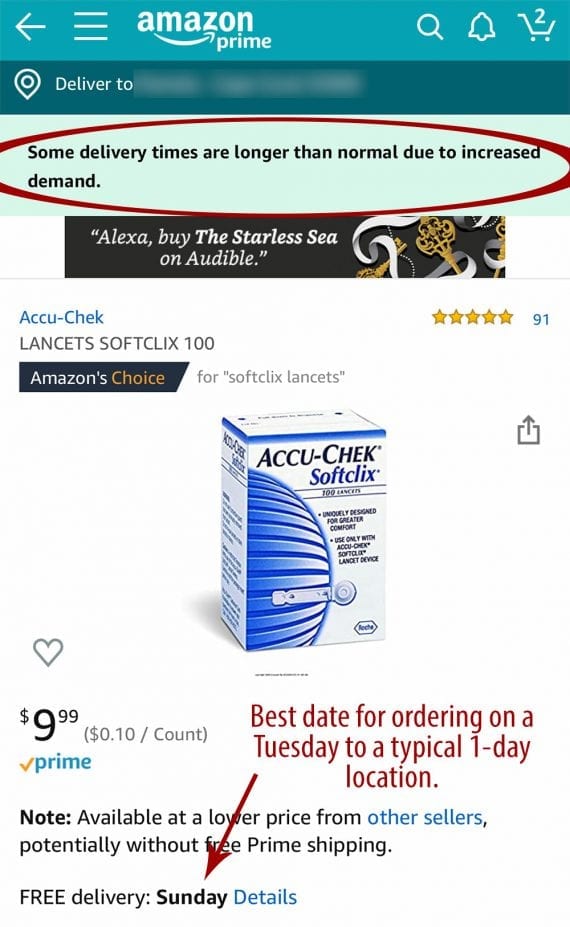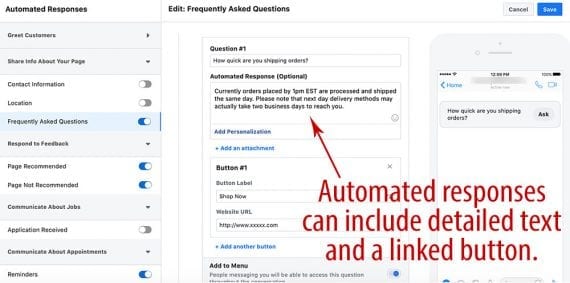With states imposing restrictions on non-essential workplaces, managing an online store can prove cumbersome. That’s especially true for ecommerce sites that are extensions of brick-and-mortar businesses. Online stores, though, will become increasingly crucial in the coming weeks.
As more consumers turn online, demands increase for better pricing and free shipping. So do requirements of expedited processing and shipping times. Even Amazon is having trouble keeping up, especially for “non-essential” goods, allowing smaller players to fill a void. People with medical conditions unrelated to Covid-19 are seeing lengthy delivery times for necessary supplies.

People with medical conditions unrelated to Covid-19 are seeing lengthy delivery times for necessary supplies, such as this blood-glucose monitoring system.
What follows are seven measures to keep your ecommerce business afloat and ease the burden of operating with limited resources.
Ease the Burden
Shift the home page’s focus and update the site’s navigation. Determine which of your products are in higher demand and then reorganize landing pages and browsing structures around those items. Focus on goods that can be packed and shipped quickly. Include accurate lead times.
Manage inventory closely. Canceling customer orders (or shipping incomplete orders) due to out-of-stocks causes stress for your brand and shopper and prompts calls and complaints.
Research carrier options. Some shipping carriers are limiting resources in certain areas. Check for changes in pickup days and times, and adjust or negotiate if necessary.
Promote live chat. Now’s the time to focus on web-based live chat and social messaging. Both allow for the handling of simultaneous requests and otherwise facilitate customer service agents to pick up where others left off.
Live chat can also accommodate address changes, lower abandonment rates, and increase average order values.
Build Covid-19 FAQs. Advise shoppers about fulfillment times, product availability, and other steps your business is taking. Create auto-responses in live chat and Facebook Messenger for the most common questions. Include links where appropriate.
On your Facebook page, go to Settings > Messaging > During a Messenger Conversation > Set up automated responses.

Use Facebook’s automated messaging feature to provide real-time customer service.
Recommend alternate products. Use analytics to track high-traffic product pages to know where to recommend alternatives.
Be transparent. Time is of the essence for many consumers, even for non-essential items. Disclose potential delays upfront to prevent a bad experience. Transparency also reduces customer-service interactions.
Diversify Channels
Consider diversifying if you sell on third-party marketplaces. Earmark inventory for other channels, as some will downgrade your listings based on availability.
Amazon, for example, punishes sellers when submitted inventory is depleted. When depleted items are back to stock the listings often rank much lower in search results. Worse, products that are out of stock for 30 days may return with limited sales history. Hence, it’s sometimes beneficial to remove inventory from your own store to ensure it stays listed on marketplaces.
And don’t halt email campaigns. Many loyal customers want to support your brand, especially if it’s a small business. Let them know how you’re doing. Provide dedicated support via live chat, phone, or one-on-one emails. You’ll need these longtime customers when this all blows over.




